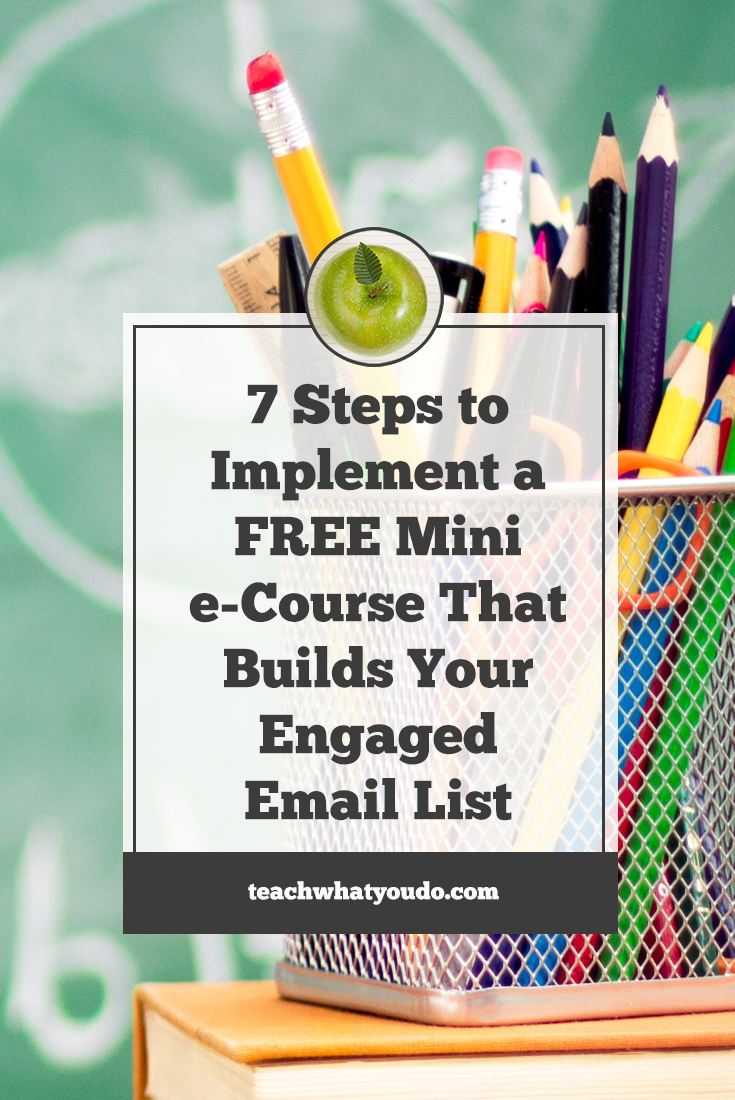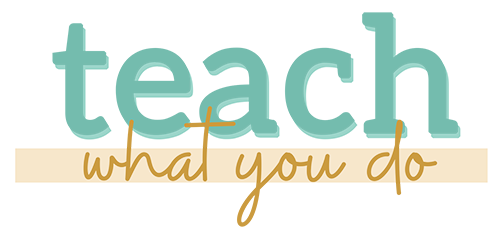 What do you do to convince customers to buy when the cart for your digital product is always open? If you sell a membership product–as I do at Get It Scrapped.com–you can only occasionally offer a sale or bonus if you want your product to retain its value. Read on for the solution that daily grows my email list and sells memberships.
What do you do to convince customers to buy when the cart for your digital product is always open? If you sell a membership product–as I do at Get It Scrapped.com–you can only occasionally offer a sale or bonus if you want your product to retain its value. Read on for the solution that daily grows my email list and sells memberships.
Offer a free mini e-Course
My favorite approach to both both building my list and growing my customer base is a variation on the sideways sales letter in which I offer a free mini e-course that perfectly preps my students for the paid offering.
My definition of a free mini e-Course is a series of 3 to 6 lessons delivered with email notice and linking to a non-protected page where the content can be immediately consumed. Awareness of your paid offering is woven into the delivery, and a special, time-limited offer is made at the end.
A free mini e-Course is a great too for both list building and sales because it:
- gets potential customers on your mailing list and engaged
- introduces your students to what it's like to learn and work with a coach or teacher in an online environment
- reveals your voice, your style, and the quality of your work
- delivers a burst of value-packed content that gets participants motivated and equipped to do work that precedes the very things you can help them with in your paid offering
I've grown my membership site at Get It Scrapped with free mini e-courses. The first one was a bear to put together. The second class went a little easier. By the third time, though, I had a system for not only coming up with a topic but for producing all the bits and pieces and delivering them in a polished series.
Use a system for building these lead magnets successfully and efficiently
There are so many moving parts to lead and sales funnels–you've got your actual content, the lead pages that promote it, the emails, that deliver it and the special offers you make to your leads. A system is essential for getting this work done efficiently and well.
Here are the seven steps in my system for delivering free mini e-courses. (There are so many steps to this work and some of them are better described via video or a live webinar, and I've got just that for you if you click here.)
- Determine and define your e-Course topic
- Create your e-Course content
- Set up the landing pages to deliver the content
- Create a landing page for “wrap-up” lesson and special offer
- Create opt-in and “thanks-for-your-interest” landing pages
- Set up the email series for delivering the series
- Promote the e-Course series
You might look at it and think: hmmm that doesn't quite make sense. Shouldn't I do the opt-in first? And the emails before the landing pages. Nope – not if you want to be efficient about the work and have an offering with unity. Interestingly enough, the order of creation is the opposite from the order you lead will enter the system. Trust me, though, this works!
Step 1. Determine and define your e-Course topic.
Start this step by focusing on what your people need or want. What are the problems, concerns, and frustrations of your audience?
THEN: Of those problems or needs, what could you teach that gets them ready for and needing your paid offering?
This work can be done with a survey, with listening on social media, and with inviting responses and conversation. What's essential is that you choose a topic that not only solves a problem, but that also preps students for your paid offering. I go into this in more detail in the live webinar/replay.
Step 2. Create your e-Course content
Your mini e-course content should be a mix of new and excerpted materials that enables your students to achieve a transformation (small but valued). It gets them from a need to a new outcome. Stay focused. Don’t go too big on your topic.
Define the lessons in your content by working backward from the goal or objective you defined in step 1. Include new materials so that the course is fresh. Include excerpted materials in order to connect to your paid content. You're just making and gathering content in this step. The presentation comes next.
Step 3. Set up landing pages to deliver the content
Deliver each of the lessons in your free mini e-course via: 1) an email that announces its readiness and that links to 2) an easy to access landing page with the lesson. No passwords. No logins. Make it easy to access and get your students in the habit of clicking on links in your emails and arriving and awesome content.
By “landing page,” I mean that the page with the content should be sidebar-free, navigation-free, and distraction-free. You can set up landing pages with plugins that suppress your website header and navigation or with dedicated landing page products like Lead Pages. Set up your first lesson landing page and get it firmly designed–then copy it for the rest of the lessons. Below each lesson, indicate what's coming next AND how the content ties to your paid product. You can also include information and even sales buttons for your paid product below the lesson.
Step 4. Create a “wrap-up” lesson and special offer and make landing pages
Your “wrap-up” lesson should both review what's been covered and point to what your student can now do–and how they can move forward with your paid product. Offer a limited-time special offer for your paid product. Create one landing page with the last lesson and this special offer. Create another with the last lesson and a standard offer. This way you can direct traffic to the standard offer once the limited-time offer has expired. (I go into greater detail on this here.)
Step 5. Set up your email list and email series for delivering the lessons.
Here are questions to consider as you decide which list to add your leads to, how to maintain it, and your delivery schedule of emails:
- YOUR LIST & TRIGGER FOR THIS SERIES: Will you add leads to an existing list with tagging or grouping triggering the email series OR will you add lead to a list just for this series with addition to the list triggering the email series? Tasks: Set up or choose list to use as well as method for trigger the series.
- SERIES PACING: Daily? Every 3 days? Weekly? On certain days of the week? Task: Determine schedule for series.
- EXPIRING LINKS or ACHIEVE THIS VIA MAINTENANCE? Tasks: Set up expiring link or map out and schedule manual maintenance.
- LIST MAINTENANCE REQUIRED? Task: Decide on schedule. Set up automation or put manual maintenance on your calendar.
Make sure your emails announcing each lesson remind students of what they're learning and achieving and how it will solve a problem for them. Keep them motivated to progress through the class.
Step 6. Opt-In and thank you pages
With your content developed and emails set to go, it's time to invite people to your free e-course.
Use the lesson landing pages made in step 3 as a starting place for designing dedicated opt-in pages, and connect them to the list you set up in the previous step. Make sure each opt-in page includes: a statement of the problem or need your class can solve, agitation of that problem, your solution, and a call to action. Make sure the action to take is clear. Use color, text size, and position to draw the eye and convey call to action.
Be sure to include a thank you page for your leads to see immediately after registration so that they know exactly how to get their materials. This is also where you'll include any conversion code if you run ads for the free class.
Step 7. Promote your free mini e-course
You can get the word out about your free class in a number of ways including:
- In your website header
- On your sidebar
- In your community
- Within blog posts
- At the bottom of blog posts
- On your social media channels
- Through others’ websites, podcasts and social media
- With paid ads
Be sure that any ads you run have visual unity with the opt-in/landing page where your lead signs up for the class
